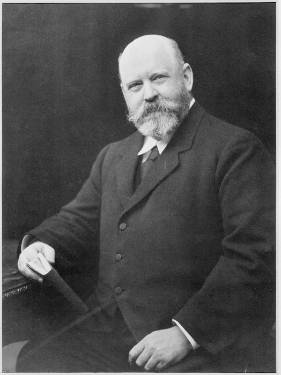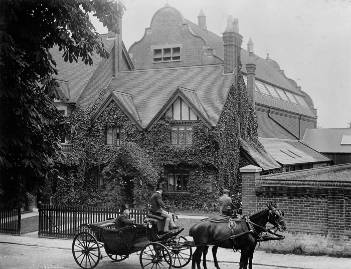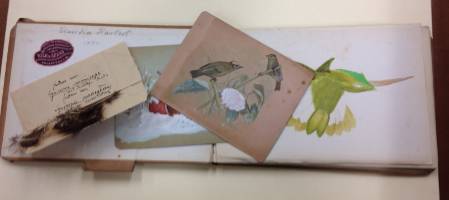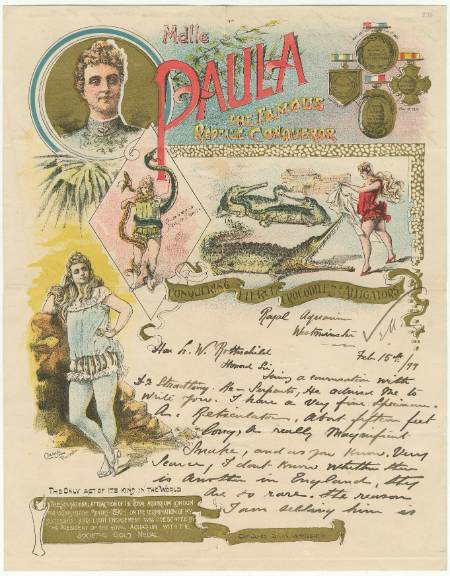This blog is written by Daisy Cunynghame from our Archives team to mark Explore Your Archive Week 2013 (www.exploreyourarchive.org)
Walter Rothschild (1868-1937), founder of the natural history museum in Tring (at that time titled the Walter Rothschild Zoological Museum) left that museum in his will to London’s Natural History Museum, including the extensive scientific specimen collections he’d amassed throughout his life.
One notable gap though was his ornithological material – Walter’s bird collection, which he began amassing from the age of seven, was widely considered to be the most comprehensive in the world, and as a Trustee of the Natural History Museum it was presumed (by him as well as us) that they would end up in our museum in South Kensington.
Unfortunately though, ultimately his finances precluded it. The economic crash of 1929 (possibly also compounded by a rumoured case of blackmail, supposedly a result of an affair with a lady of high standing) left him financially struggling and he sold his famed bird collection to the American Museum of Natural History (AMNH) in New York when they were able to raise a substantially higher balance for the collection than we.
Perhaps helping to shed a little more light on this, and definitely showing the more personal side to Walter’s decision, is the Museum Archive’s recently acquired small collection of Walter’s private letters. Particularly interesting because he had asked that all his personal correspondence be destroyed on his death - a wish which was carried out, leaving very little of his own letters to be read.
In one letter in 1932 Walter wrote to Ernst Hartert, who had previously been one of his curators at Tring, that:
It is with a very heavy heart & with most of my life torn up, that I write these lines. Owing to the world economic conditions & the failure of many stocks & bonds to pay interest, not to talk of increased & increasing taxation, I / have been forced to retrench drastically. The 2 alternatives which faced me were either to dispose of one of my two scientific collections as a whole or else to see the museum broken up & sold piecemeal by auction. I could not face the latter alternative as my life’s work would have been annihilated. So I had to decide to dispose of that collection /for which I could find a purchaser as a whole, & that is the bird collection. I have disposed of the whole collection except about 200 skins & the 250 Struthionidae & of course the mounted portion, ie about 280000 skins & the contract as signed provides that the collection is kept together in a separate room as the Rothschild collection under a separate body of three / trustees. As the British Museum could not find the money; the collection has been purchased & presented to the American Museum. I know that you will feel as crushed by this blow as I do but the worlds collapse made it inevitable.
The deal with the AMNH was protracted with negotiations with other museums, including ourselves, also taking place. The complexity and controversy of the deal is demonstrated by him later when he mentions:
The economic conditions in America are in such a bad way that the millionaire donor has absolutely forbidden his name or the sum to become known at present for fear of reprisals for having spent such a large sum; so at all events for some months I cannot say anything. All I can tell you is that the sum is a third more than I expected to get & much more than I even could have got in Europe before the war even [sic]. 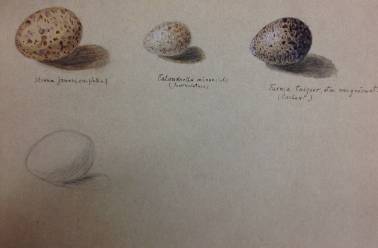
Almost as excitingly, in this little collection there is also a notebook of sketches of Claudia Hartert, Ernst Hartert’s wife, for his book ‘On the birds of the islands of Aruba, Curacao and Bonaire’. The little volume contains sketches of eggs and birds, as well as bird feathers.
This collection was sent to us by the Dutch Art Museum in the Hague, who found the package when clearing out their basement. Quite how or why the letters Walter wrote and Hartert’s sketches ended up in Holland is entirely unknown.



